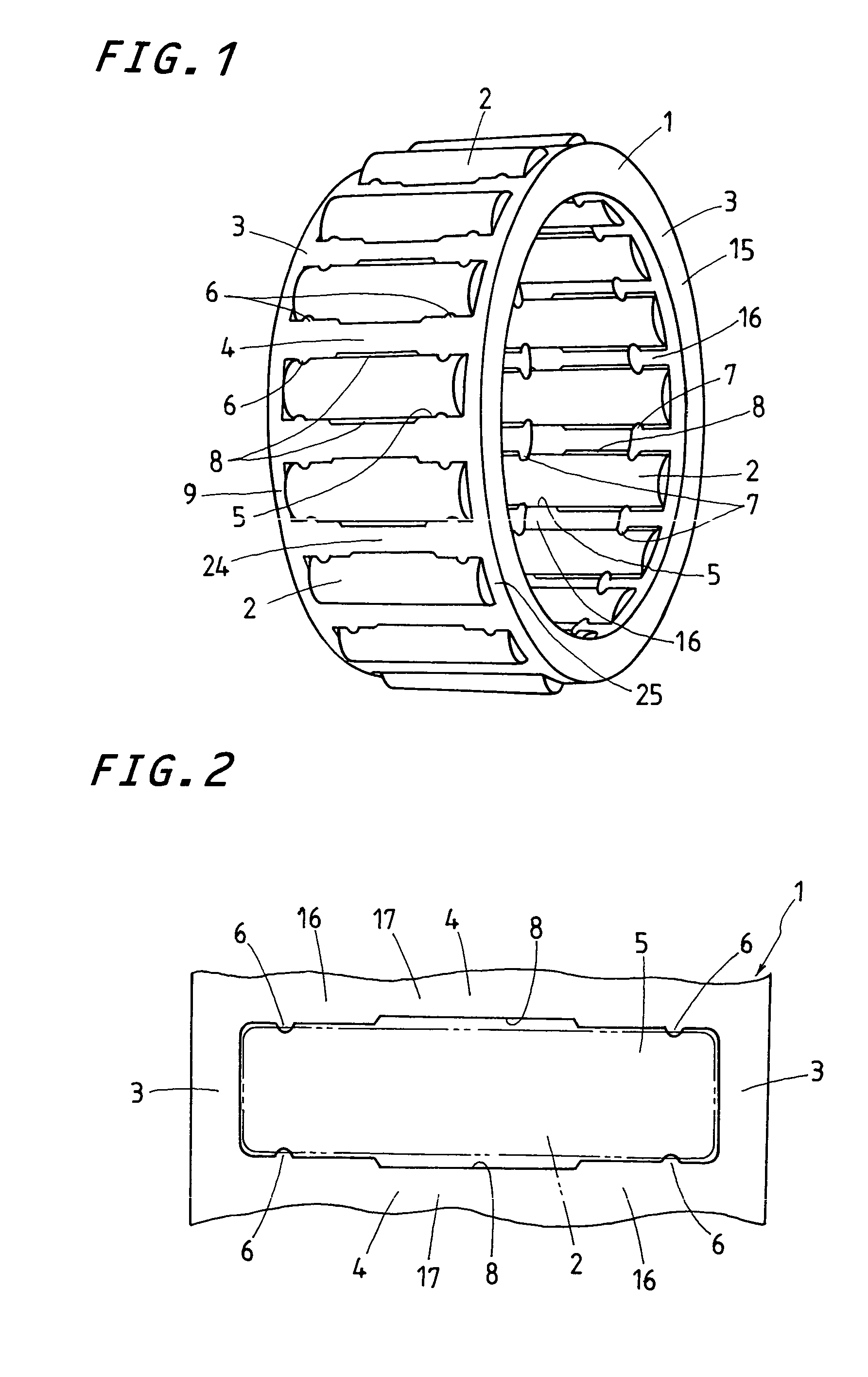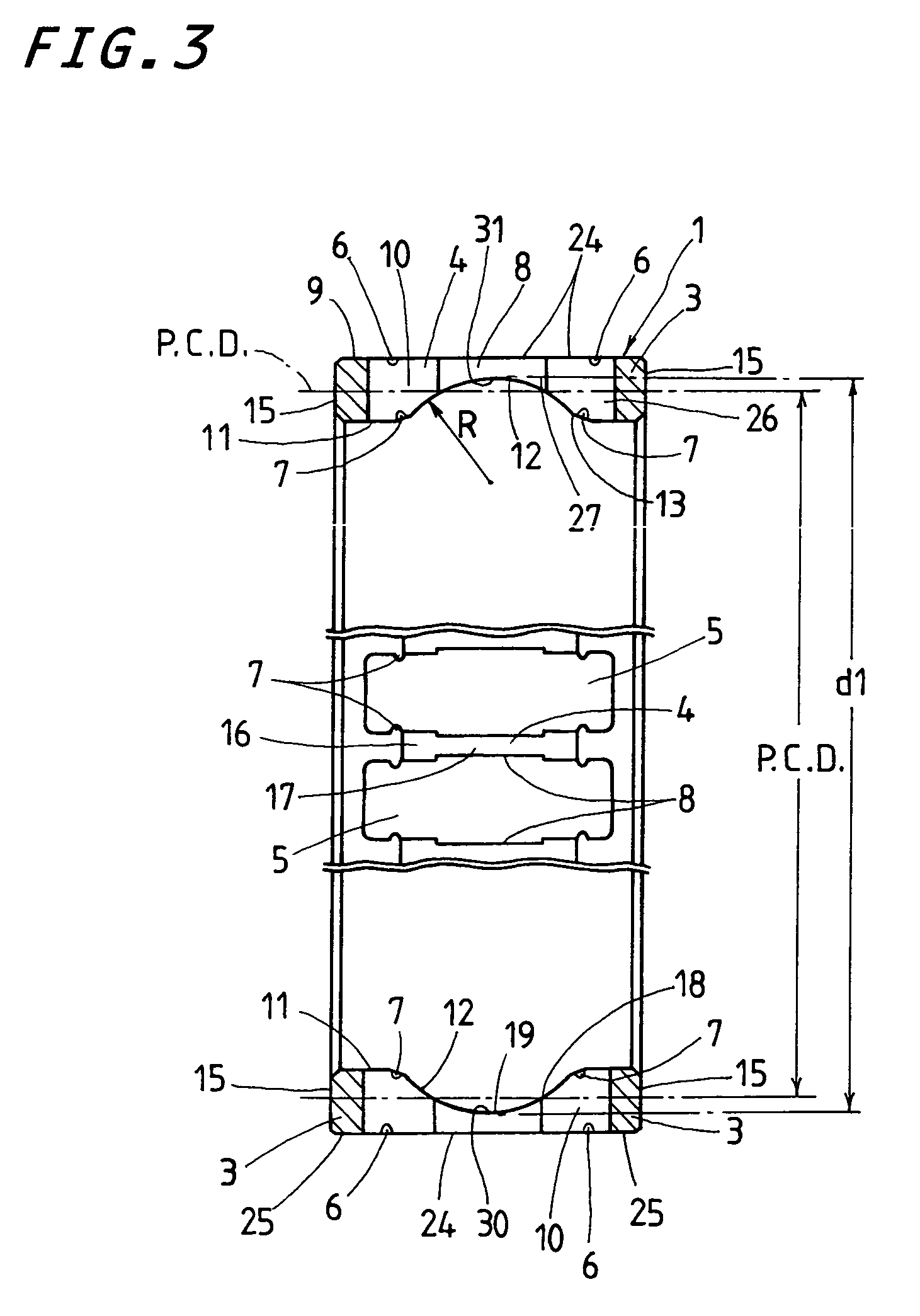Roller bearing cage and method of producing the same
a technology of roller bearings and cages, which is applied in the direction of roller bearings, connecting rod bearings, mechanical devices, etc., can solve the problems of inconvenient production, high labor intensity, and inability to finish the cage blank in the desired contour, so as to save the row stock of material, improve the efficiency of production, and save production costs
- Summary
- Abstract
- Description
- Claims
- Application Information
AI Technical Summary
Benefits of technology
Problems solved by technology
Method used
Image
Examples
Embodiment Construction
[0036]A roller bearing cage and a method of producing the same according to the present invention will be explained below with reference to the accompanying drawings. The roller bearing cage according to the present invention discussed later is adapted for use in machines such as engines, and so on, especially in a rod “big end” of the connecting rod in the engine. Referring to FIGS. 1 to 4, a roller bearing cage of the present invention will be described below in detail.
[0037]The roller bearing cage of the present invention is mainly comprised of a cage 1 and rollers 2, commonly referred to as “needle”, which fit in the cage 1. The cage is composed of a pair of annular members 3 spaced away from one another in axial direction with extended circularly in parallel with one another, and a plurality of pillars 4 made integral with the annular members 3 and positioned at regular intervals around the circular surfaces of the annular members 3 to form pockets 5 between any two adjacent pi...
PUM
 Login to View More
Login to View More Abstract
Description
Claims
Application Information
 Login to View More
Login to View More - R&D
- Intellectual Property
- Life Sciences
- Materials
- Tech Scout
- Unparalleled Data Quality
- Higher Quality Content
- 60% Fewer Hallucinations
Browse by: Latest US Patents, China's latest patents, Technical Efficacy Thesaurus, Application Domain, Technology Topic, Popular Technical Reports.
© 2025 PatSnap. All rights reserved.Legal|Privacy policy|Modern Slavery Act Transparency Statement|Sitemap|About US| Contact US: help@patsnap.com



